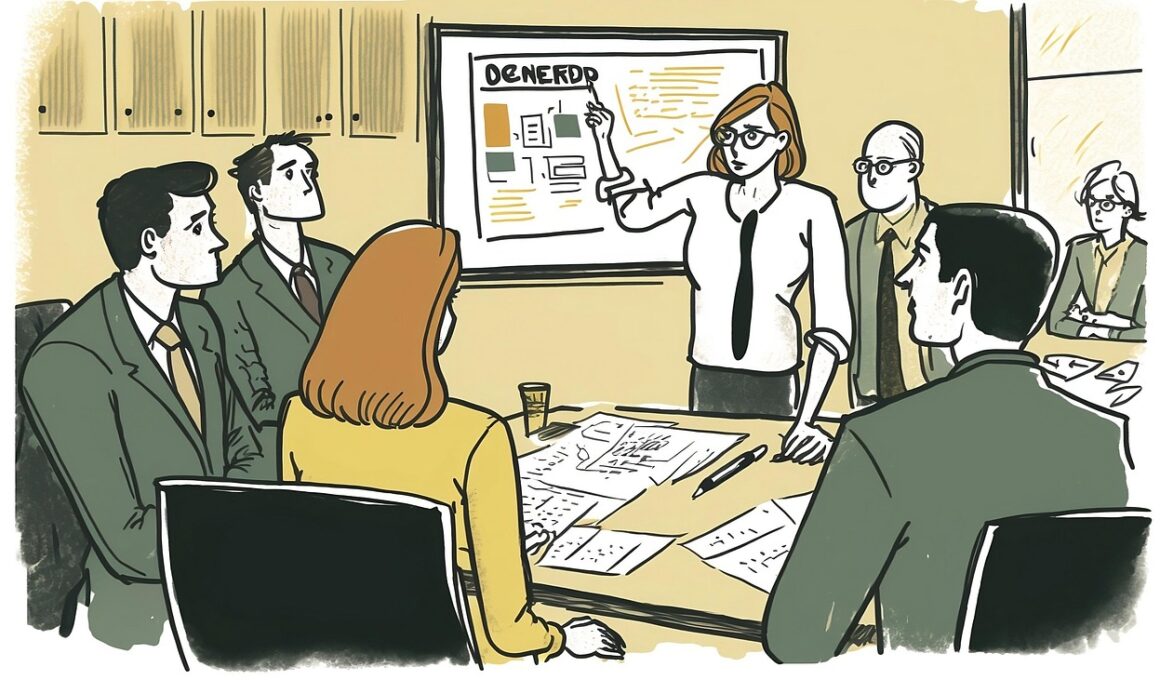Leading Change in a Multigenerational Workforce
In today’s fast-paced corporate environment, the ability to lead change effectively within a multigenerational workforce is crucial. Organizations are increasingly staffed by individuals from various age demographics, each bringing unique perspectives, values, and work ethics. Addressing these differences can yield benefits for innovation and problem-solving but can also pose challenges. Change leadership requires understanding that what motivates Baby Boomers may differ significantly from Generation X, Millennials, or Generation Z. Effective leaders recognize that adapting their approach to accommodate diverse needs is essential for promoting collaboration. This adaptation fosters an inclusive atmosphere where all voices are heard, and insights are valued, resulting in higher morale and productivity. Training programs aimed at enhancing communication skills can bridge generational gaps, while tailored strategies ensure that motivations align with organizational goals. As companies grow, they must focus on creating pathways that merge these varied experiences to form cohesive teams. Enhanced understanding of distinct perspectives can guide strategic initiatives, ultimately leading to successful adoption of changes. Leaders must be agile, compassionate, and resilient, navigating the complexities of generational dynamics in modern workplaces.
The Importance of Communication
Effective communication is the cornerstone of successful change leadership in a multigenerational workforce. Different age groups have their preferred modes of communication, which can lead to misunderstandings if not properly addressed. For instance, older generations might favor direct, face-to-face discussions, while younger employees may be more comfortable with digital communication tools. Therefore, leaders must create a communication strategy that accommodates these diverse preferences. Establishing regular check-ins, feedback loops, and collaborative platforms can help bridge these differences and facilitate open dialogue among team members. Additionally, utilizing technology to streamline communications ensures that no one feels left out. Leaders should embrace a transparent communication style that encourages team members to voice concerns and suggestions. By fostering an environment where all employees feel safe to communicate, leaders can harness the strengths of each generation. This approach not only enhances engagement but also strengthens team cohesion. Ultimately, communication should be seen as an ongoing process rather than a one-time effort. Cultivating this culture of continuous dialogue makes transitions smoother and prepares teams for future changes.
Another significant element in leading change within a multigenerational workforce is recognizing and rewarding contributions effectively. Different generations tend to look for varying forms of recognition, making it essential for leaders to tailor their acknowledgment approaches. For instance, while Baby Boomers may appreciate public recognition and rewards, Millennials often prioritize meaningful feedback and opportunities for growth. Thus, a structured reward system that celebrates diverse achievements can enhance motivation across all age groups. Regularly scheduled recognition events, personalized accolades, and performance bonuses can effectively appreciate an individual’s contributions, fostering a culture of respect and appreciation. Furthermore, feedback should go beyond traditional annual reviews; it should be constructive and timely. Advocacy for peer recognition initiatives also empowers teams, encouraging them to celebrate each other’s successes. Leaders can promote this culture by facilitating training sessions that help employees recognize contributions in meaningful ways. This way, not only do employees feel valued, but their engagement levels increase. Subsequently, a higher commitment level contributes positively to organizational resilience during transitions.
Building an Inclusive Culture
Building an inclusive culture is a vital strategy for leaders navigating the complexities of change in a multigenerational workplace. By fostering an environment that values diversity, organizations can tap into the unique experiences and insights of employees of all ages. Leaders must actively promote initiatives that celebrate this diversity, such as mentorship programs pairing seasoned employees with younger talent. Regular training sessions on cultural competence are also beneficial, educating employees on generational differences and how they contribute to workplace dynamics. Organizations can further enhance inclusivity by encouraging collaboration through cross-functional teams, leveraging various skill sets, and perspectives to solve problems effectively. Facilitating social events that cater to all age groups can also help foster relationships among employees, boosting morale and teamwork. Importantly, leaders should consistently assess their diverse environment through feedback gathering, allowing employees to voice their opinions and needs. This feedback loop can lead to continuous improvement in inclusivity initiatives and a greater sense of belonging among team members. A strong culture of inclusivity ultimately leads to enhanced employee satisfaction, loyalty, and creativity.
Revisiting the approach to employee development is essential for effective change leadership. Acknowledging that each generation may have unique aspirations and learning preferences allows leaders to develop tailored professional growth initiatives. For instance, Millennials often seek opportunities for continuous learning, while Baby Boomers may value mentorship roles. Leaders can implement flexible development programs accommodating these differences, promoting lifelong learning and effective career pathing. Online courses, peer coaching, and skill-sharing platforms can support the diverse professional growth needs of employees. Additionally, establishing a clear progression framework can motivate employees across generations, aligning their growth with organizational objectives. Regularly revisiting these frameworks ensures that they remain relevant and aligned with employee aspirations. Leaders can also encourage employees to take ownership of their development by providing resources and support systems that foster autonomy. As a result, productivity and retention increase, empowering each employee to contribute effectively during significant changes. Emphasizing personal and professional growth helps create a positive atmosphere where employees feel invested in both their paths and organizational success.
Promoting Flexibility
Flexibility in the workplace emerges as a crucial factor in leading change within a multigenerational workforce. As each generation brings varying expectations, leaders must accommodate these differences to foster a smoother transition during change initiatives. For example, younger employees might prioritize work-life balance, while older generations may emphasize job security and stability. Embracing flexible work options, such as remote work or hybrid models, allows organizations to meet the diverse needs of employees effectively. Additionally, fostering a culture of flexibility extends to decision-making processes. By empowering employees to take ownership of their roles and offering autonomy in their work, leaders nurture a sense of responsibility and commitment. As organizations navigate transitions, such flexibility can facilitate adaptation to new protocols and processes. Engaging employees in discussions about flexibility helps identify their needs and enables leaders to tailor strategies accordingly. Recognizing that one size does not fit all contributes positively to team dynamics during change initiatives. Regular evaluations of flexibility options ensure that companies stay responsive to the needs of their diverse workforce.
Finally, sustaining momentum in leading change requires continuous evaluation of strategies and practices in a multigenerational context. Leaders must be attentive to feedback regarding the effectiveness of initiatives and remain open to adjustments. Regular assessments enable organizations to identify areas for improvement and adapt to the shifting needs of employees. Establishing metrics that gauge engagement and satisfaction allows leaders to make informed decisions while guiding adaptations. Continuous improvement processes ensure that efforts remain aligned with both organizational goals and employees’ expectations. Moreover, leaders should promote a culture of experimentation, encouraging teams to test new approaches and share valuable insights. Fostering an environment where feedback is embraced strengthens trust between leaders and team members, facilitating greater willingness to engage in change efforts. Teams that feel heard and valued are more likely to commit to a company’s vision and goals. Ultimately, the capacity to lead change within a diverse and multigenerational workforce hinges on a leader’s willingness to listen, adapt, and create a dynamic environment where all employees can thrive.


